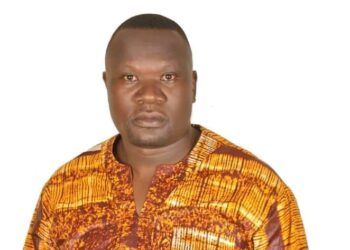By Denis Jjuuko
There are approximately 1.5 million babies born in Uganda every year. That isn’t news since Uganda has one of the fastest growing populations in the world. What might be newsworthy is that approximately 15,000 of those kids have heart defects and half of that number (7,500) need treatment. There are also others that are born without any defects but failure or delays in treating sore throats among children between ages 5-15 ends up causing Rheumatic Heart Disease (RHD). RHD is highly prevalent yet preventable. Failure to treat sore throats leads to inflammation of the heart, which occurs with acute rheumatic fever hence permanent damage of the heart, particularly the heart valves.
In Uganda, there is only one heart institute at Mulago, which receives about 500 children every year that need surgery. This number is low because majority of the children that need treatment are not even brought into the institute’s system. You know how our people can easily resort to witchcraft. However, the Uganda Heart Institute (UHI) is constrained. Even though they have the capacity to carry out five open-heart surgeries every day, they don’t have enough Intensive Care Unit (ICU) beds.
So they have borrowed ICU space at the equally constrained Uganda Cancer Institute, who according to UHI’s executive director, have issued them an eviction notice. Without enough ICU beds, the doctors can’t carry out surgeries because there is need for post-surgery care otherwise the patient dies.
I almost shed tears listening to these statistics last week when as Rotary we launched a campaign to operate 110 kids. My Rotary Club of Kampala Naalya, and the Rotary clubs of Kampala, Bukoto, and Mengo together with two other clubs abroad, Gift of Life International, and Rotary International have raised over Shs1 billion for these surgeries.
However, the backlog at the Uganda Heart Institute is so huge that even if you pay today, you may not even be worked on. An open heart surgery costs Shs25 million in Uganda as opposed to USD20,000 (approximately Shs74 million) in India. And every day, there are people going to India and elsewhere for such surgeries. We are donating money.
What is shocking is the amount of money the institute needs to do their job effectively. The executive director, Dr John Omangino, said that the institute needs at least 12 ICU beds. They have the land and approved designs but have no money. They don’t have the approval from government to borrow from a commercial bank and build the facility. How much money do they need? Just USD1.8m or approximately Shs7 billion — the same amount doesn’t even get you 10 brand new Land Cruiser V8s.
Since an open-heart surgery costs Shs25m in Uganda, let us do some simple math. Assume, doctors operate five patients every day 20 days a month, it means that they can operate 1,200 people every year. That would bring in Shs30 billion to the institute. Let me assume that the net profit would be 10%, which is Shs3 billion a year. The institute would, therefore, be able to pay off its Shs7 billion loan in just three years. So why doesn’t government give them the money or allow them to commercially borrow? Actually, the country would save more money, which Ugandans pay to Indian hospitals for the same job that could be done here. Dr Omangino told us that there isn’t any surgery the Indian hospitals perform that his expert team can’t.
He also mentioned something else that caught my attention. His team doesn’t want more money as salaries increment. They just need the tools to do their job. As other doctors are demanding higher pay, the experts at the institute are just crying for tools. It must be emotionally tough for them to see people who could be saved die. I don’t know how long they will stay. They may leave and go make more money abroad.
As a country, given the money involved, we can easily build heart institutes in all the 13 referral hospitals in Uganda so anybody who has a problem is worked on where they are instead of traveling to Mulago. When we talk about decentralization that is what it is supposed to mean. So with 13 centres across the country each working on five patients a day, we wouldn’t have any backlog. The 7500 kids (without mentioning adults) that need attention would be worked on easily and clear the backlog of many years within a short time. The fee would significantly reduce from the current Shs25m because of economies of scale.
The author is a communication and visibility consultant. djjuuko@gmail.com
*Photo of District Governor Elect Xavier Ssentamu with a child who had undergone surgery curtesy of Rotary’s shs1 billion fund. Photo by Rotary Club of Kampala.
Do you have a story in your community or an opinion to share with us: Email us at editorial@watchdoguganda.com











